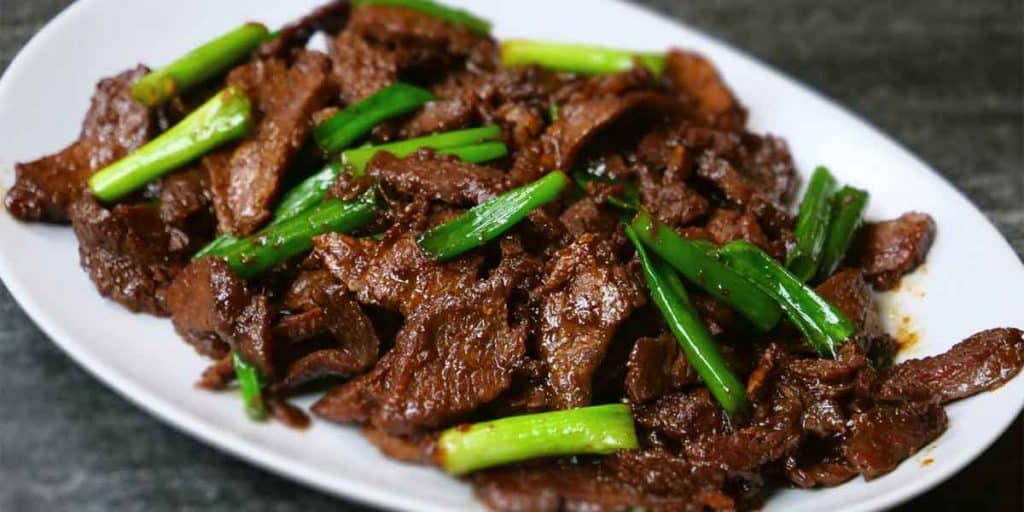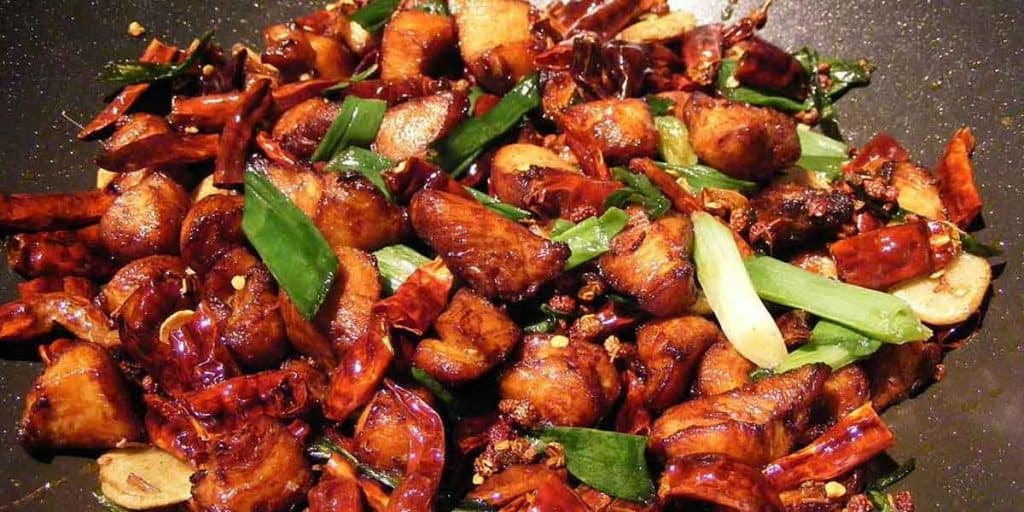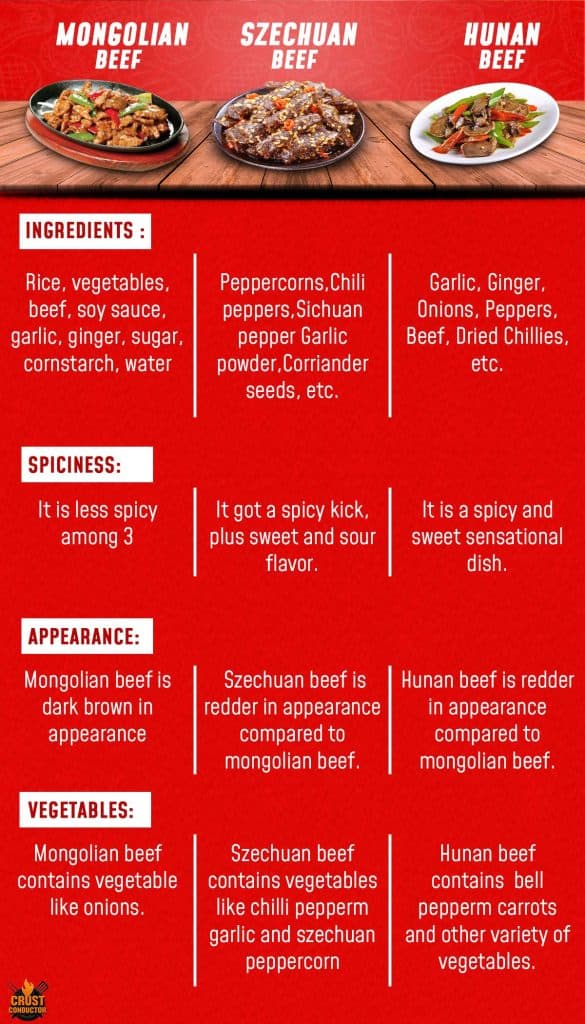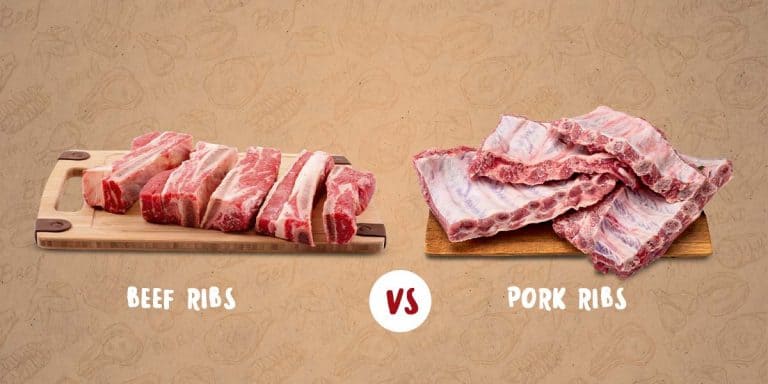Mongolian Beef vs Szechuan Beef vs Hunan Beef | What’s the Difference?
Chinese cuisine is one of the most popular and well-known cuisines globally. It has been around for thousands of years with its rich history and is still being practiced today. Chinese food culture is not only about making delicious dishes, but it is also about respecting those who prepare them.
Chinese food culture dates back to over 5,000 years ago, when people discovered fermentation techniques, allowing them to preserve their food for more extended periods. If you’re looking for a new culinary experience, then Chinese cuisine is a great place to start. It is a combination of several cuisines from the numerous regions of China.
These cuisines are greatly influenced by the culture and region they come from. In mainland China, there are eight major regions: Szechuan, Hunan, Fujian, Zhejiang, Anhui, Shandong, Cantonese, and Jiangsu. Each of these regions has its own unique cooking style with different ingredients and preparation methods.
The Chinese have always believed that food should be prepared with great care. It should be enjoyed by all people regardless of social status or financial situation.
In fact, it’s estimated that over 4 billion people enjoy Chinese cuisine around the world! Chinese food is made with various ingredients from all over the world, including herbs, spices, fruits, and vegetables.
The main ingredients used in Chinese cooking include rice, soy sauce, garlic, ginger root, onions, and mushrooms, just to name a few! Chinese cuisine uses different cooking methods such as stir-frying, steaming, and boiling to create delicious dishes that are healthy and nutritious at the same time.
Szechuan Beef Vs Mongolian Beef Vs Hunan Beef | Historical Origins
Mongolian beef, Szechuan beef, and Hunan beef are three different types of Chinese meat dishes that are quite popular in Western countries. They each have their own unique origins, so let’s take a look at how these three delicious meals came about.
1.Szechuan Cuisine

Szechuan cuisine is a spicy, bold, and flavorful cuisine that originated in China. It’s one of the most popular types of Chinese food and has its roots extending back to ancient times.
The cuisine originated in the Sichuan Province of China, which is located in the southwestern part of the country.
Szechuan implies four rivers that are four major rivers in this region (Tuo, Min, Jinsha, and Jiulong), which are represented by their respective colors: blue (Tuo), red (Min), green (Jinsha), and yellow (Jiulong). This unique flavor can be attributed to the prominence of chili peppers, garlic, and Szechuan peppercorns in its sauce.
2. Mongolian Cuisine

Mongolian cuisine is a style of cooking that originated in Mongolia, and its most famous dish is Mongolian beef. However, Mongolian cuisine as we know it today was not born in Mongolia—it originated in Taiwan in the 1950s.
It was heavily influenced by the Japanese style of teppanyaki, which was popular at the time.
The cuisine was then brought over to China by migrant workers from Taiwan and became very popular there because of its exotic nature. Since then, Mongolian beef has become a mainstay on menus across China—and now around the world.
3. Hunan Beef

Hunan beef is a dish that has been around for hundreds of years, originating from a mix of provinces in China, and it is traceable to the Western human region.
It is widely known for its many spices and bold flavor. The dish originated in Hunan Province, located in the south of Lake Dongting.
It is made with ingredients from the region surrounding Lake Dongting and the Xiang River—and those ingredients are symbolic of agricultural output from those areas.
What is Mongolian Beef?

Mongolian Beef is a delicious, flavorful dish with roots in Chinese cuisine. It’s made with flank steak, cooked in a sweet and spicy sauce.
The sauce is made with soy sauce, garlic, green onions, sesame oil, and oyster sauce. The Beef is cooked until it’s browned and tender, then set aside while you stir-fry sliced onions in oil before adding the rest of the ingredients to make the sauce. You can serve Mongolian Beef on top of rice or noodles if desired!
But what does Mongolian beef taste like?. The combination of spices used in this dish makes it sweet and spicy at the same time—it’s truly a unique flavor that you won’t find anywhere else!.
Mongolian Beef is a Chinese dish made with thinly-sliced Beef, fresh vegetables, and a brown sauce. It’s often stir-fried on a grill or in a wok at high temperatures.
Discrete Characteristics Of Mongolian Beef
What makes Mongolian Beef different from other stir-fries? First off, the Beef is sliced very thin—much thinner than that of most other stir-fries. This makes it easier to cook and chewier than other stir-fries. The vegetables are also very fresh, which helps keep the flavor light and bright without being too heavy or greasy.
The sauce itself is mild but rich and thick—it coats your mouth and sticks to your tongue just enough so that when you’re done eating, it feels like you’ve had something hearty but not heavy at all!
What is Szechuan Beef?

The Szechuan beef stir-fry is one of the most flavorful and best-known dishes in Chinese cuisine. It’s a bold, spicy dish that will please your taste buds. The primary ingredients used in preparing this stir fry meal are garlic, chili peppers, and peppercorn—all of which give it a bold and spicy taste that’ll leave you wanting more.
Szechuan Beef is served over rice or noodles for a complete meal. This mouthwatering dish will leave you feeling satisfied and full. Prepare yourself for an explosion of flavor in your mouth with every bite–This bold and spicy dish is sure to be one of the best things you’ve ever tasted.
Unique Characteristics Of Szechuan Beef
Szechuan cuisine is famous for its numbing flavor, which is called ma la in Chinese (which translates to “numbing hot”).
The numbing sensation is due to the Szechuan peppercorn spice. Szechuan peppercorns are not peppers. They’re not even a type of pepper! They come from a shrub called the prickly ash, and they have a citrusy taste and smell that’s similar to lavender.
It is also one of the spices in Chinese five-spice powder: cinnamon, star anise, fennel, cloves, and Szechuan peppercorn. Szechuan peppercorn is part of the citrus family, which explains its citrusy taste, and its aroma is considered comparable to the smell of lavender.
What is Hunan Beef?

Hunan beef is a dish that is characterized by its unique flavor and texture. It’s made out of thinly sliced Beef, loaded with colorful veggies, and tossed in a hot and spicy sauce. The dish has a lot of vegetables that are cooked until they are tender and juicy.
This gives the dish a unique flavor that blends with the meat’s tenderness to create an overall pleasing experience for your taste buds!. The flavor of this dish can be described as being sweet and spicy at the same time. The sauce has an interesting mix of ingredients that makes it super tasty.
Unique Characteristics Of Hunan Beef
Hunan Beef is typically cooked with fresh spices, which gives it a darker, deeper brown colour. It also tends to have more straightforward heat in the flavor on account of the fresh spices that are used in the cooking process.
The Beef is marinated in soy sauce, ginger, garlic, and black pepper before being cooked with green onions and chili peppers until tender.
Hunan Beef also usually has an oilier texture and is often served with a side of rice and steamed vegetables. The marinating process tenderizes the meat so that it’s very tender when served, especially if first velveted before being fried.
Mongolian Beef Vs Szechuan Beef Vs Hunan Beef

What is the Difference between Mongolian Beef and Szechuan Beef, and Hunan beef?. It can be easy to confuse amongst Mongolian Beef, Szechuan Beef, and Hunan Beef, but if you just keep a few things in mind, it will be much easier to differentiate them. Mongolian Beef is a stir-fried dish with Beef and vegetables, typically served with noodles or rice.
It’s typically made with soy sauce, ginger, garlic, and green onions. Szechuan Beef is similar to Mongolian Beef but includes Szechuan pepper and chili oil.
Hunan beef is another variation on Mongolian and Szechuan dishes but typically includes hot peppers in addition to the other ingredients. Each of these dishes has its own distinct flavor profile, but they all have one thing in common: they’re all delicious.
1. Ingredients
Mongolian Beef : is a stir fry of beef and vegetables, typically served over rice noodles. The sauce consists of soy sauce, garlic, ginger, sugar, cornstarch, and water. It doesn’t use bean paste; instead, it uses fresh ingredients and has more vegetables than Hunan beef and Szechuan Beef.
Hunan beef : is typically prepared with garlic, ginger, onions, peppers, and other seasonings to create a flavorful sauce that coats Beef when it cooks. Hunan beef uses chilies that have been dried to give them a smoky flavor and create a powerful heat that lingers on your tongue long after you’ve finished eating it.
Schezwan Beef : has a specific combination of spices used —including peppercorns, chili peppers, Sichuan pepper (which gives food an extra kick), garlic powder or cloves (for flavor), coriander seeds (for aroma), fennel seeds (also for aroma), star anise (for sweetness), cinnamon sticks (for spiciness). Schezwan Beef uses fresh chilies, which are often pickled or fermented before being added to the dish, and other spices that give it an amazing taste.
2. Spiciness
Mongolian Beef is the mildest, while Szechuan is the spiciest. Hunan beef falls somewhere in between, with a sweet-and-sour flavor that’s a little prickly on the tongue.
Mongolian beef : This dish is the mildest and sweetest of all. It’s made with meat that has been marinated in soy sauce, garlic, sesame oil, and other ingredients for up to 24 hours before it is cooked with mushrooms and green onions. The result is a savory meal perfect as an appetizer or side dish!
Hunan beef : has a spicy kick (sweet-and-sour flavor)that will leave your mouth feeling tingly and numb—and it’s delicious! It’s made with meat cooked in garlic, ginger, soy sauce, and other spices. The result is a savory dish that’s perfect for serving with rice and vegetables for dinner.
Szechuan Beef : This spicy dish packs quite a punch –a spicy-sweet sensation! It’s made with Beef that has been marinated in garlic, ginger, soy sauce, sesame oil, and other spices before being stir-fried with vegetables like bell peppers or onions—and yes…Szechuan peppercorns numb the taste slightly to feel quite a kick!
3. Preparation
Mongolian Beef : is another popular Chinese dish consisting of strips of Beef cooked with scallions and garlic, typically mixed with soy sauce and brown sugar. Mongolian Beef uses a similar sauce as Szechuan Beef and includes water chestnuts and green onions for additional flavor. It is made with stir-fried beef strips and onions in a sweet sauce.
Hunan beef : It differs from the other two dishes in that it does not use any sauces at all. Instead, it relies on the marinating process to achieve its desired flavor profile. This dish also uses red and green bell peppers and onion slices instead of green onions or sesame seeds.
It is made with tender slices of steak stir-fried in hot chili oil until it’s browned, then covered with a savory sauce made from soy sauce, garlic, ginger, and other seasonings.
Szechuan Beef : is a Chinese dish consisting of beef strips cooked in a spicy Szechuan pepper sauce. This dish is made with tender slices of Beef sautéed in a combination of soy sauce, rice wine, cornstarch, sugar, and ginger.
The heat from the chili peppers can be adjusted to your taste by adding or reducing the amount of peppers used. It is then topped with green onions and sesame seeds. The sauce is then poured over the meat and served over steamed rice.
4. Appearance
Chinese food is a diverse, delicious, and affordable cuisine that anyone can enjoy. It has a wide range of flavors and tastes, but it also contains many different ingredients that give each dish its unique taste.
Szechuan, Mongolian, and Hunan beef have distinctive tastes and appearances. This is because they use different ingredients to make their sauces.
Szechuan typically has a sauce that is much redder in appearance. This is because it uses chili peppers, which make the sauce red. Szechuan also uses garlic, ginger, and scallions, which give it its characteristic flavor.
Mongolian normally have a sauce that is dark brown in appearance. This is because it uses soy sauce and peanut butter, which give it its characteristic flavor. Mongolian also use onions, garlic, and ginger to flavor the dish.
The sauce on Hunan beef is normally redder than other types of Chinese food because chili peppers are used to make the sauce red. Chilli peppers also give Hunan Beef its characteristic flavor.
5. Vegetables
Mongolian Beef : is a popular Chinese dish made up of Beef, onions, and vegetables. It has fewer components, so it’s easier to make than a traditional stir-fry. Because Mongolian stir-fry contains fewer components, it also cooks faster than other types of stir-fries. It’s usually served over rice or noodles and topped with a sweet-and-sour sauce.
Hunan beef : is a dish popular in the Hunan region of China, and it is served with a variety of vegetables, including bell peppers and carrots. The key to this dish is the sauce made from soy sauce and spices like ginger and garlic. It’s often served with bell peppers and carrots.
Szechuan cuisine : is known for its bold flavors and spicy heat. It also contains fewer vegetables, which means it’s less crunchy and more creamy in texture. The crunch comes from nuts like sesame seeds, cashew nuts, and salted peanuts.
Conclusion
Chinese food is a wonderful way to enjoy a meal with friends or family. There are many different styles of Chinese food, but some dishes have come to define the way we think about certain styles of food.
When it comes to Chinese food, some dishes are so popular that they have come to define how we think about certain styles of food.
We recommend trying Hunan Beef, Szechuan Beef, and Mongolian Beef. These dishes are very different, but all have one thing in common: they are incredibly delicious. They are all spicy dishes that will tantalize your taste buds.
Now that you know the Difference between hunan and Szechuan Beef and Mongolian Beef—You can experience the thrill of eating something new and exciting. Try one of these great dishes today!







